I am going offline for a few days, since I need a bit of a break, so I will leave you with a selection of photographs from the Himalayan Foothills, Northern India. When I log on again in a few days, I’ll catch up with everyone’s blogs and comments.
By ‘Foothills’ I mean the ranges of hills and smaller mountains that guard the approach to the Himalaya proper, where the big beasties rise up to heights of over 8000m with permanent ice and snow cover. The old Raj hill stations such as Nainital and Darjeeling were built at heights of around 2000m – high by UK standards, but certainly not by Himalayan ones.

Naini Tal, Nainital Town, Northern India. Morning Light. Nainital lake, (‘naina’ is Sanskrit for eye and ‘tal’ means lake) in Hindu mythology, is one of the emerald green eyes of Sati, Shiva’s wife. This was my first view of it after getting off of the overnight bus from Delhi.

Gadhar Kunkyop Ling Gompa, Nainital. Unlike many other Himalayan towns, Nainital has no sizeable Tibetan population, and this Monastery, perched high to the North East, overlooking the lake, is the only one in Nainital and home to just seven monks.

Morning mist, Nainital.
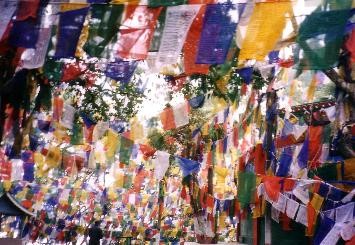
A sea of prayer flags on Observatory Hill, Darjeeling. Darjeeling, unlike Nainital, has a large Tibetan population and many Gompas both in the town and the surrounding hills. Observatory Hill is the site of the original temple of Dorje Ling, long destroyed, but after which the town was named, once the British had persuaded the then ruler of the area, the Chogyal of Sikkim, to lease them the land to build a hill station. The hill is now home to a Hindu shrine, with the British built church of Saint Andrew close-by.
But no Gompa.

The ‘Toy Train’ stopped outside Samten Choling Gompa at Ghoom, near Darjeeling. This train runs for 51 miles from Siliguri to Darjeeling, rising a total of just over 7000 ft. It has numerous steep gradients and sharp curves, including the famous one at ‘Agony Point’ – originally the loop there was a diameter of only 59.5 ft and the train literally overhung the mountainside as it rounded the curve. All in all, quite a remarkable engineering feat and deservedly a World Heritage site.

Druk Sangak Gompa, a large Buddhist monastery on the edge of Darjeeling, West Bengal. A fairly new gompa, it was inaugurated by the Dalai Lama in 1992.
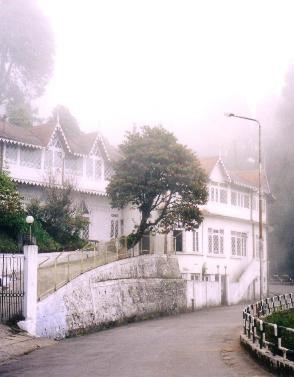
Not Chelmsford, UK, but Darjeeling, West Bengal). Many of the old British hill stations, such as Darjeeling, still retain much of their colonial character.
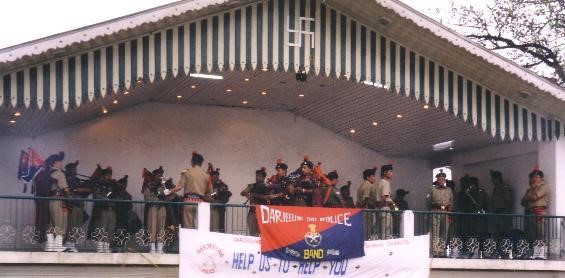
A clash of cultures! And what a clash. East meets west, with brass band in the park meeting the Indian Himalaya, courtesy of the Darjeeling Police Band. The band played in a bandstand on the Chowrasta, the open square at the top of Darjeeling, close to Observatory Hill. In the days of the Raj, this would, no doubt, have been familiar to all who lived there. Close your eyes and think of England…
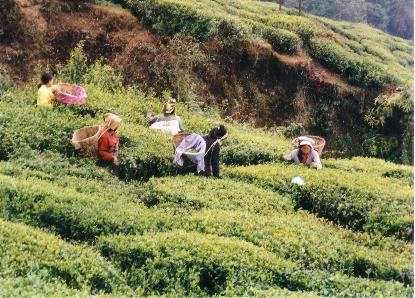
Tea pickers, Darjeeling. Think of Darjeeling, think of tea. In the hills surrounding Darjeeling are numerous tea estates, where the job of tea picking, sorting, drying and packing goes on much as it has done for the last 150 years.

Buddhist painting on rock wall, by open air shrine, Darjeeling. As well as the larger gompas, you come across small shrines and gompas unexpectedly around odd corners everywhere.

Prayer Lags in Yumthang Valley, Northern Sikkim. This is as far north in Sikkim that you are allowed to travel, just a few miles south and west of Tibet. Everybody is still very touchy about borders.

Crossing a bridge in the Yumthang valley. It should be safe, considering the number of prayer flags!

Unnamed 6000m peaks overlooking the Yumthang Valley. We asked our guide the names of these peaks, only to be disparagingly told ‘They don’t have names. They’re less than 6000m tall.
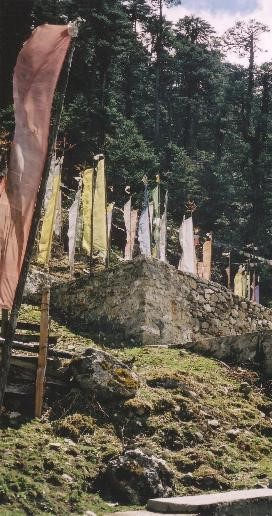
And more prayer flags…
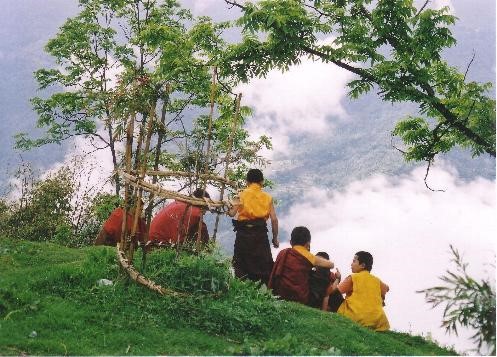
Young monks on a hillside, Phodong Gompa, Sikkim.

Monastery wall painting, Lachung Gompa, Northern Sikkim. Lachung Gompa is about 2km above Lachung village, at a height of about 3000m. It is not a ‘working’ gompa, the monks living down in the village rather than at the gompa, so it is generally kept locked and only used on festivals and full moon days.
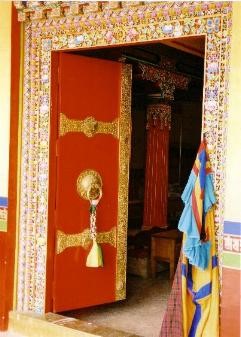
Monastery door, Tharpa Choling Gompa, Kalimpong, W.B. Kalimpong, not far from Darjeeling, but 1000 metres lower, has also a large Tibetan population.

Statue of Chenrezig (Avalokiteshvara), Durpin Gompa, Kalimpong, West Bengal. Chenrezig (Tibetan) or Avalokiteshvara is the Bodhisattva (a being who has partly or completely attained the state of enlightenment) of compassion. The well-known mantra ‘Om Mani Padme Hum’ is dedicated to him.
Kalimpong market:
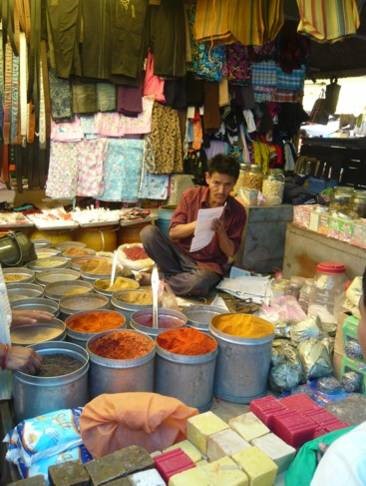
I watched this gentleman for some time before I approached and asked for a photo. he was rapidly serving a succession of customers at great speed, making up little paper screws of spices and powders at a tremendous rate…

…whereas this gentleman served his customers at a more leisurely pace, as if he had all the time in the world.

This gentleman was delighted to be photographed with his fine collection of Kukris. As I prepared to take the photo, he picked up a kukri and brandished it with a none too convincing snarl, to the obvious amusement of most of the people around him.

This stall-holder seemed to find it hilarious that I should want to photograph her.

This lady, on the other hand, was delighted to be photographed; volunteering eagerly when a lady on a nearby stall refused.
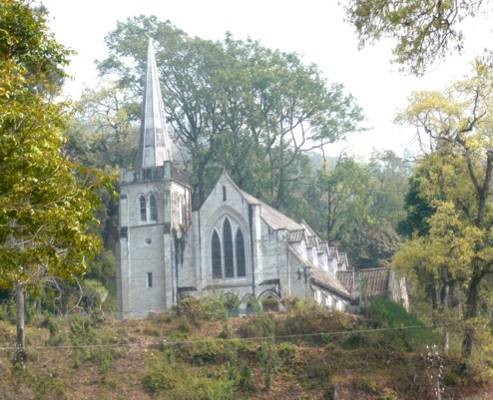
The Katherine Graham Memorial Chapel, in the grounds of the Dr Graham School and home, Kalimpong. Built in 1925, it looks to have materialised straight out of the Scottish Highlands. Dr Graham was a Scottish missionary, and built the home and school originally to educate the children of local tea estate workers. It now has a far broader intake.

Lake Dal, Srinagar, Kashmir. Unfortunately, it is still probably unwise to visit most of Kashmir, and things will probably remain this way for some considerable time to come. A pity, because this really is a most beautiful part of India and Pakistan. I took these photos in 1989, a very short while before the area became off-limits to tourists.

Panorama – Lake Dal, Srinagar, Kashmir). In the distance is the Hazratbal Mosque, a comparatively modern mosque, enshrining a hair of the prophet.

Hindu shrine. Near the shore of Lake Dal in Kashmir.

Houseboats around the shore of Lake Dal, Shrinagar, Kashmir. In the nineteenth century, the British, who first developed Srinagar as a hill station to get away from the stifling heat of the Indian Plains in the summer, found that the then Maharajah refused to sell them land to build houses. The solution? They built boats to live on…great, elaborate, ornate carved and decorated houseboats. These same boats, with many more recent editions, now function as floating hotels to tourists. The majority are moored not on the actual shore, but a little way off, often on the edge of small islands. This gives the local shakira (a type of small boat unique to Lake Dal) owners a chance to clean up, as a taxi service.
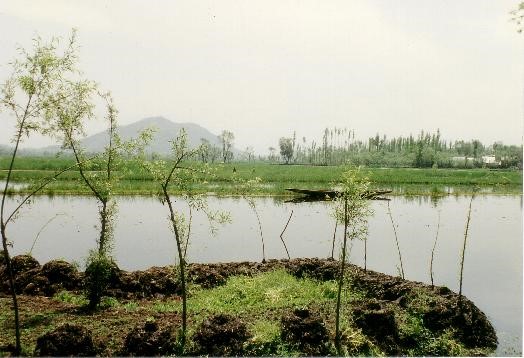
Shakira moored on Lake Dal.
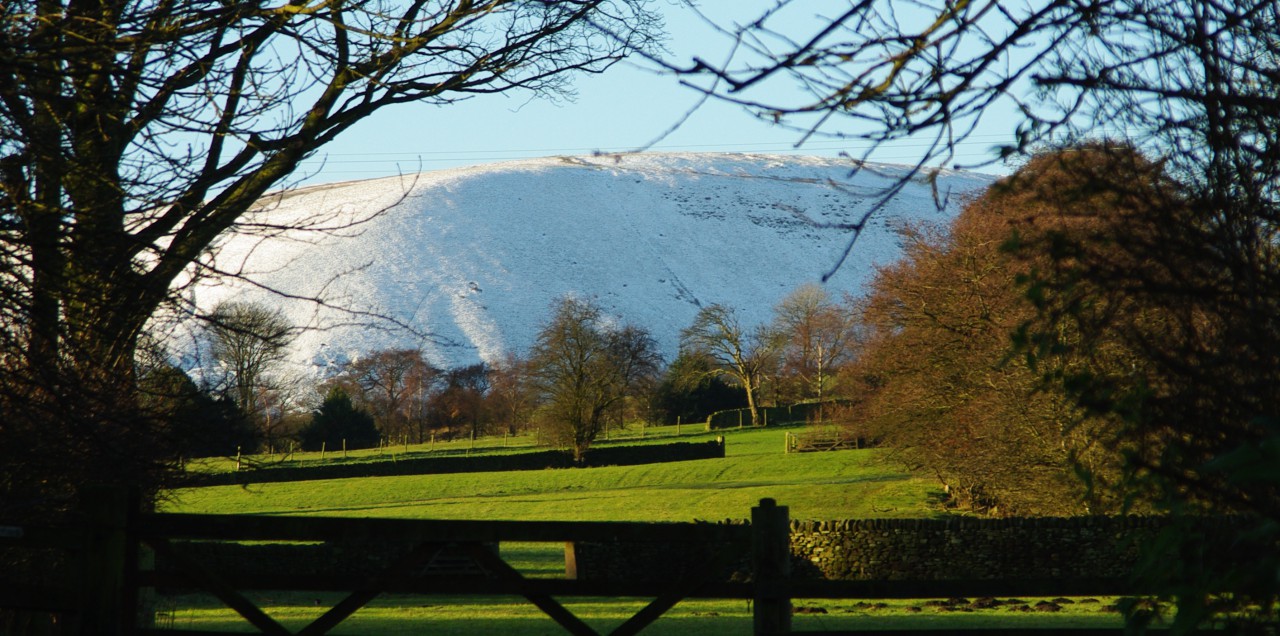
thank you for this article and beautiful photos, ……. good holiday
LikeLiked by 4 people
You’re very welcome. And thank you!
LikeLike
Great pictures Mick. you’re lucky to be able to visit before 1990 when militancy broke in Kashmir. Even though things have improved greatly in last few years with tourist numbers going up considerably, people refrain from exploring the place by sticking to standard tourist circuit. militants on the other hand are targeting only army as scaring away tourists will hit local economy badly, therefore the states sponsoring militancy don’t want local people/ residents to turn against militants and lose support. quite complicated!
LikeLiked by 4 people
That sounds a little like Nepal during the Maoist insurgency, Arv. In actual fact, the Kashmir militancy broke out very shortly after my visit (although I don’t think it was my fault!) and I was probably one of the last western tourists for some while. On each visit to India I encounter people trying to sell tours to Kashmir, but I’m still rather hesitant to go.
LikeLiked by 1 person
Wonderful selection of photos, Mick. What a stunning surreal view to greet you as you got off the bus. I particularly enjoyed all the ones of the stall owners, would love to be able to smell all the spices and funny with the brandishing knife guy. Wishing you a lovely peaceful break.😀
LikeLiked by 3 people
Thank you, Annika. Yes, the stall owner with the kukris put on his fiercest face for my photo, but everyone around him fell about laughing.
LikeLiked by 1 person
Beautiful photographs Mick.
LikeLiked by 2 people
Thanks, Colin. I’m glad you like them.
LikeLike
The photographs are stunning & I enjoyed this read Mr Canning! Have a good break
LikeLiked by 3 people
Thanks very much, Divya.
LikeLiked by 1 person
Wonderful photos, Mick – what a beautiful part of the world. I’d love to go there one day, when it becomes more available to western tourists. Hope you enjoy your offline break 🙂
LikeLiked by 2 people
Most of it is perfectly safe, Helen. Of the places in my photos, it’s only Kashmir that is still slightly suspect and it is probably (as Arv points out above) perfectly safe for tourists.
LikeLiked by 1 person
Yes, it probably is, and there are probably communities and businesses that would like to see more visitors. It’s a shame unrest has kept people away for so long. Definitely somewhere I’m going to go one day.
LikeLiked by 2 people
Really lovely photos, Mick. The mountain peaks over the Yumthang Valley are really spectacular. Great photography.
LikeLiked by 2 people
They certainly are amazing!
LikeLiked by 2 people
Enjoy your break, Mick, and we will look forward to more interesting posts when you return!
LikeLiked by 2 people
Thanks, Ann. I suppose that means that I’ll have to try to think of something interesting!
LikeLiked by 1 person
Great work, my Dear Mick!
Visiting all those places, and writing about them in very precise terms – giving the right local names, and their meanings!
Just want to know, …You have shown mostly places of the Buddhist kind. Is it because they predominate there? Would like to know.
And I had thought that ‘house boats’ were ones on which our cinema heroes and heroines went around when they sang their songs! Now it seems that they were going about in those Shakiras.
And shakira does seem to be the word. But, given the type of ‘service’ they render, would it not be right to call them ‘Shikaris?’ Haha!
Regards. 🙂
LikeLiked by 1 person
Well, I’ve attempted to be accurate, but I’m sure that I’ve failed a few times. Certainly, in much of the Himalaya Buddhism is frequently met, and I do have an interest in it too. And yes, the word is ‘shikara’ – my mistake!
LikeLiked by 1 person
Thank You for all that.
And about the name of the boat, I had not known. …Am sure You know the meaning of ‘Shikara!’ Haha! Regards. 🙂
LikeLiked by 2 people
Happy break time, enjoy it. Lovely pictures Mick. We just have a wish list of places and Kashmir and the surrounding places are one among them. Your post is more inspiring.
LikeLiked by 2 people
Thanks, Meena. Hopefully you visit!
LikeLiked by 1 person
It was nice walking through the history.I am also getting interested in Buddhism.
LikeLiked by 2 people
These are beautiful pictures, Mick. I enjoy looking at them and living your experience through your lens.
LikeLiked by 2 people
Thanks, Jacqueline. I’m delighted that you like them.
LikeLiked by 1 person
I really love this blog and I have visited it a few times. You write so well about the area and the photos are the icing on the cake. You have been most fortunate to visit all of these places. I would love to visit Darjeeling and take in the Surrey belt… thousands of miles away. Lucky you visiting Kashmir….a memory to savour. My grandfather brought some Kashmiri silk back for my grandmother in 1928. She kept the silk until my first son was born,… it had been wrapped in tissue paper and stored in a trunk. She got it out and made a christening gown and shawl from it. Absolutely beautifully soft and faded only slightly.
LikeLiked by 1 person
Delighted that you actually came back for another look! Thank you so much!
Yes, I have undoubtedly been lucky, especially visiting Kashmir what turned out to be just a few weeks before hostilities rendered it off-limits to tourists. It is possible to visit the Vale of Kashmir, now, where Srinigar sits, but I believe it is still a bit dodgy outside that area.
And how lovely that your son’s christening gown was made from Kashmiri silk. That is something to treasure!
LikeLiked by 1 person
I keep looking at this post. The Blog is super because your photographs are so vivid. You really make me want to visit the place.
BTW – I have started your book. I know I should have waited until my holiday but I thought, just read a page or two to get into the mood. Its good. Very good! 🙂
LikeLiked by 1 person
Thanks, Jackie, for both of those! I think you should visit – I fancy you said you’d never been to India. Wasn’t it your grandfather that was out there?
LikeLike
Yes he was in the Indian Army and yes this is the Blog that I thought about posting the You Tube video to… but that’s a bit presumptive, don’t ya think! I would be interested in seeing more of those pictures when you have time ( ps hopefully no editing today)
LikeLiked by 1 person
You can always put a link on the comments – it’s not as if you’re hogging someone else’s site to promote your own video!
I’m sure there will be more photos in the not too distant future.
LikeLiked by 1 person
I will look later, it may inspire others to go. I am at work and as you know, keep minimise the screen when someone comes in in case they think I am not working..
LikeLiked by 1 person
Okay. I’m ‘working’ on my book at home, so it’s only the cat watching, and she don’t care.
LikeLiked by 1 person
that made me smile
LikeLiked by 1 person
LikeLiked by 1 person
Thanks, Jackie. Lovely – been there done that! That’s the short journey (2 hours) from Darjeeling out to Ghum and back, via the Ghurka war memorial (with the flowers) where it turns round.
The whole is 53 miles down to the plains, and takes 6-9 hours each way!
LikeLike
heavens, almost like a Wagon Lits expedition . I was fascinated when you said that it was a bit of a hair raising journey and wanted to see the train turn but I couldn’t find one ( I don’t think). I love the way the trains run through the streets. Am looking to visit in February… subject to finances.
LikeLiked by 1 person
Ooh, I’ll be jealous, I warn you!
February should be a good time to go – Darjeeling will be a bit nippy then, though.
LikeLike
I don’t want it too hot. The rest of India will be warm though wont it? Went to KL in January and almost died sitting on top of the Hop On Hop off bus. I wondered why it was ” just the Brits” on top 😦
LikeLiked by 1 person
Warm in February, but not too hot. Sometime around mid-March it begins to get very hot in Northern India.
LikeLiked by 1 person
How tight are the corners and how much does it hang over the edge In other words.. IS IT SAFE?????
LikeLiked by 1 person
Erm, they can be a bit reckless. I wouldn’t say there is no risk involved, but it’s never stopped me. I guess that’s something only you can decide.
LikeLike
OMG – that is such a ” sit on the fence” reply, you should be ashamed of yourself 😦 I just don’t want to fall over the edge if he takes the corner too fast
LikeLiked by 1 person
Not really – pointing out that they can be a bit reckless. Is it more dangerous than a similar trip in UK? Yes, it is. Would I do it? I would, as I would think it an acceptable risk, but I obviously couldn’t answer for anyone else.
LikeLiked by 1 person
I don’t mind reckless if its things such as ” banging into cars” or ” fast speeds” I just don’t want to tumble off down the mountainside when they take a sharp turn. I must investigate via You Tube again….seen a holiday that takes in Shimla so I am very interested 🙂
LikeLiked by 1 person
You can fly to Shimla…
LikeLike
from UK? or an internal flight. Thing is, I am never satisfied. I want the Hills and I want to go up in a train…
LikeLiked by 1 person
Well, it’s an internal flight. But if it was the train trip that worried you, they’re perfectly safe (barring freak accidents). It’s the driving on roads that’s rather more hazardous.
LikeLiked by 1 person